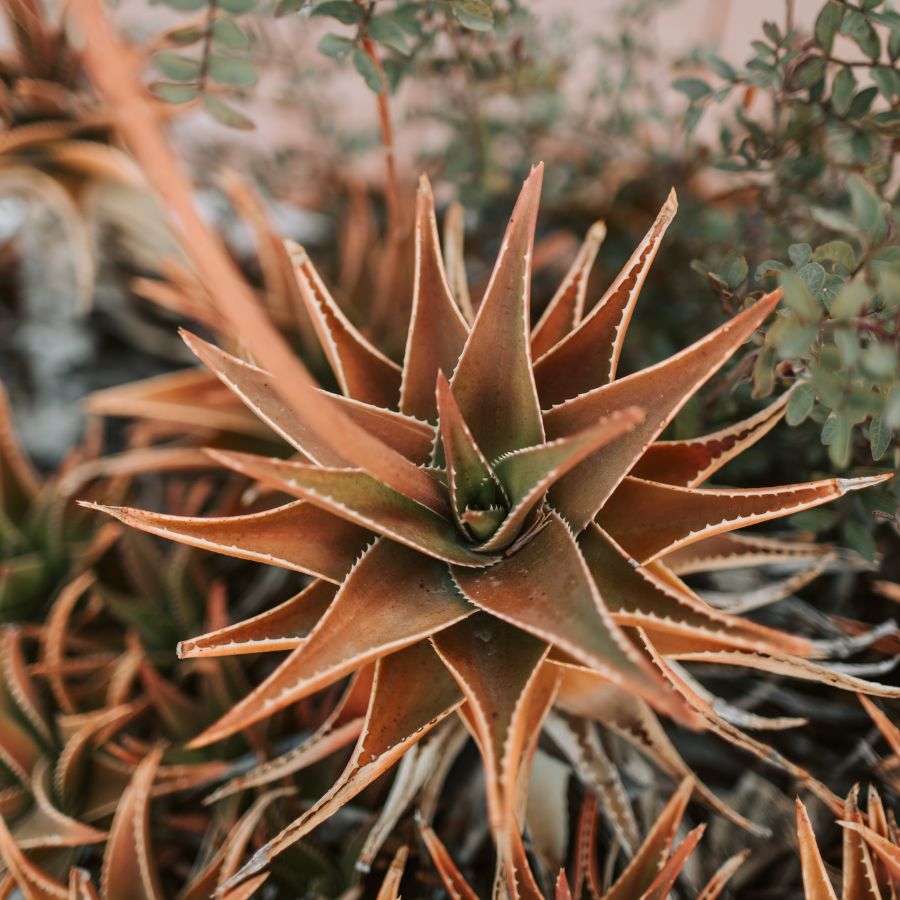Learn More About Low Water Plants for Xeriscape Landscaping
Find the Unique Properties of Xeriscape Plants to Maximize Creativity & Beauty
Finding xeriscape plants and all the makes them unique can is vital when you are creating your epic landscaping design and wish list of what you want your yard to be. Review the plants identified here to get xeriscaping ideas to incorporate into your own xeriscaping.
One aspect to consider while designing your xeriscape is color. Xeriscape doesn’t not mean bland, flat, dirt and rocks, it’s an opportunity for your creativity to come to life. Front yard xeriscape ideas can revolve around shapes, size, height, color, texture, and you can use all of that to tell a story.
As far as color is concerned in xeriscape ideas, you can have an entire color palette play out in your yard. You can layer color in shorter plants, mid size plants, and trees. You can also choose plants with varying bloom times so there’s always color in your yard.
Colorful Xeriscape Plants Ideas
Glaucous Echeveria
The Glaucous Echeveria is a classic succulent, and a perfect xeriscape plant. It comes in a variety of sizes, and at first you can think, how is this colorful? This is a subtle color example where the plant is a lovely color, with leaves rimmed with contrasting color. It’s the pop on the rim that helps to create the color palette.
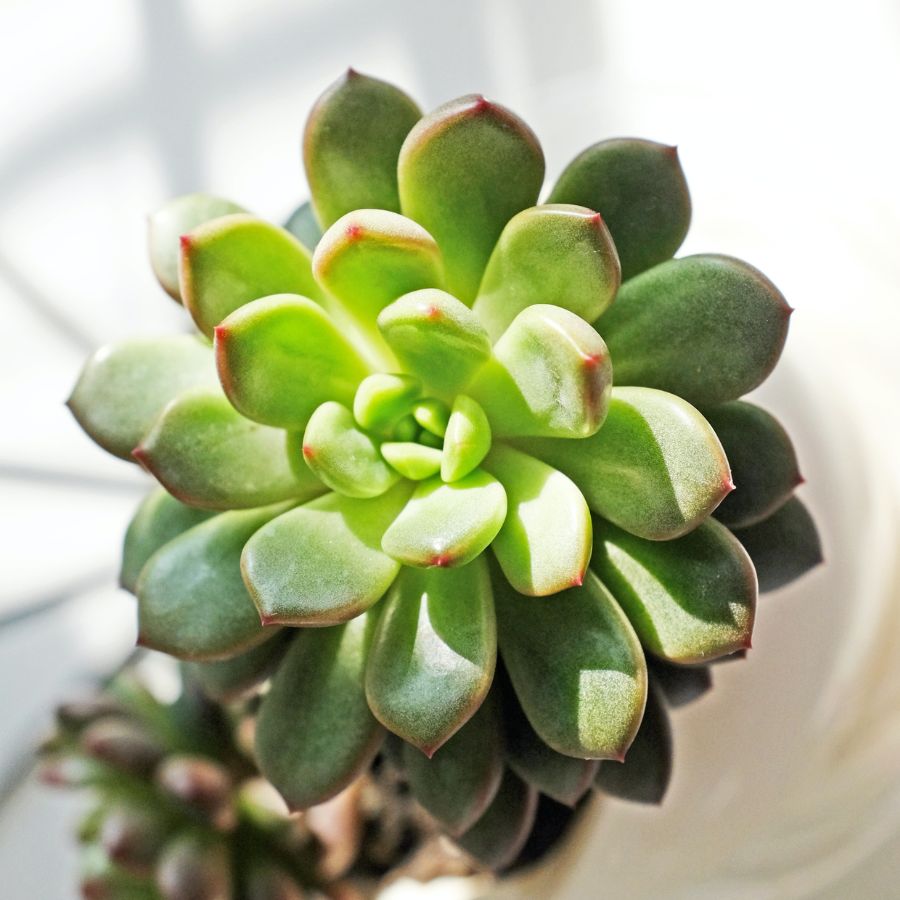
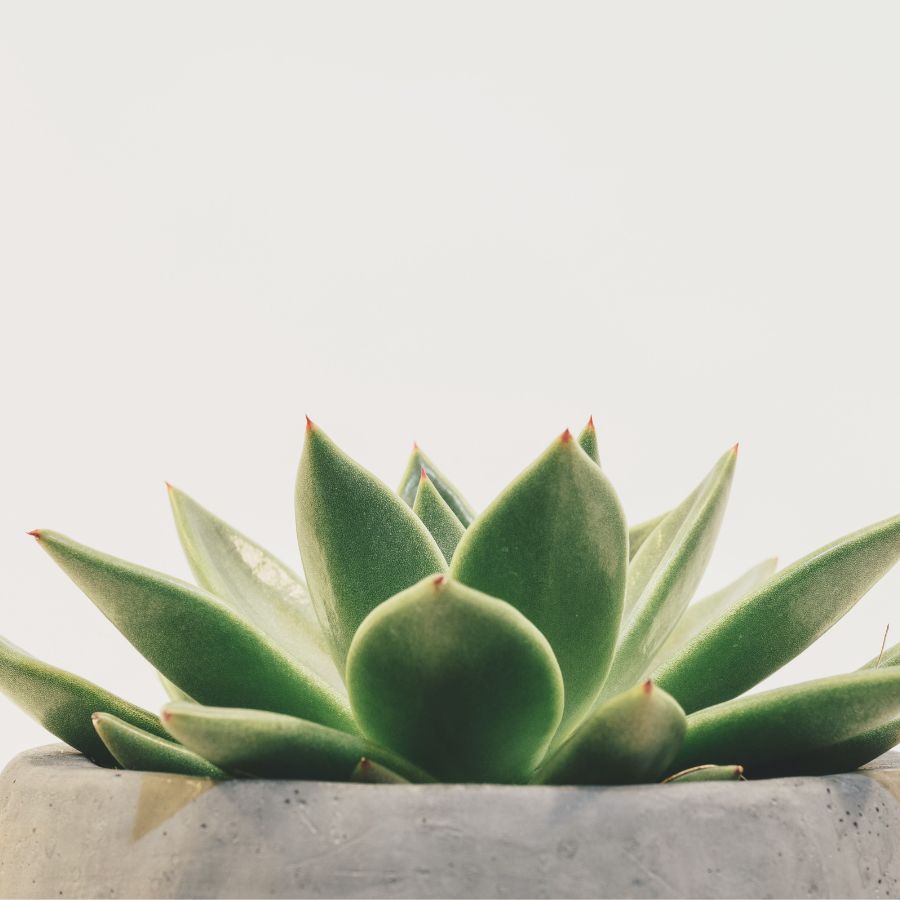
Agave
There are multiple varieties of the agave plant. The most common is A. americana, which is native to tropical America. The monocot thrives in hot and arid regions of the Americas, with some species being native to the tropical regions of South America. The plant also has a nickname, “century plant”, as it takes 10 to 30 years to flower. Sadly, the plant starts to die after it has flowered. The plant can also be found in southern Europe, and Africa.
Star of Madeira
The Star of Madeira comes from off the coast of Morocco and grabs the eye with the cones of color! The Star of Madeira color combination of the green and the purple gives you a double blast of color. They flower from spring to early summer and after establishing the roots, it’s a perfect low water requirement plant.
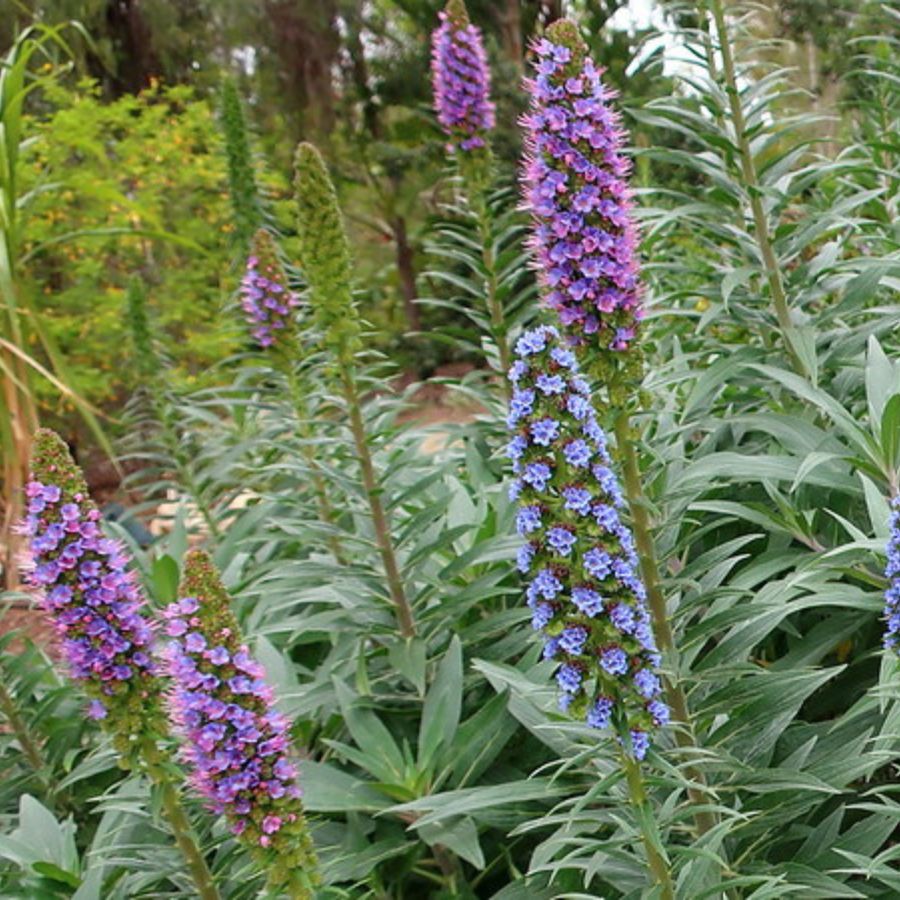
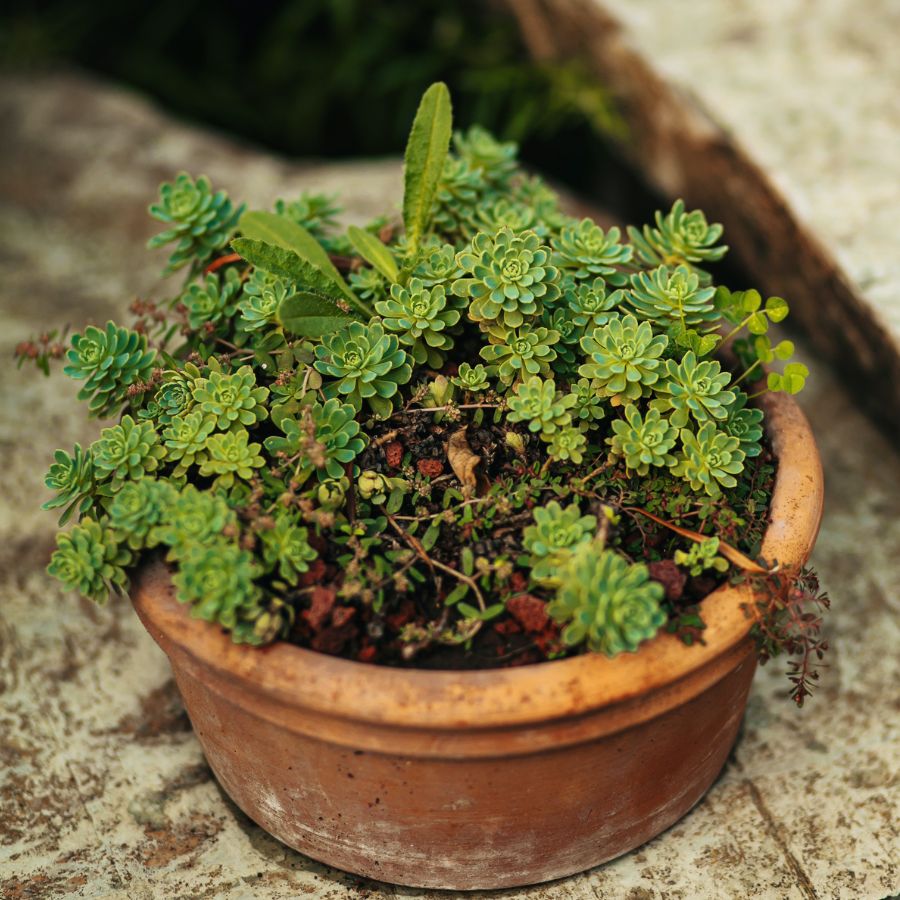
Sedum
Sedum has water storing leaves, which makes it a great contender for drought like conditions. Sedum blooms throughout the summer with star like flowers. There are up to 400 varieties of sedum, or stonecrop. The variety includes those that grow close to the ground and those that grow tall and are loved by pollinators.
Bird of Paradise
The bird of paradise is a common plant, but there are reasons for that. The color contrast here of the flower, that is the shape of a bird’s head is quite breathtaking. They typically flower from September through May.
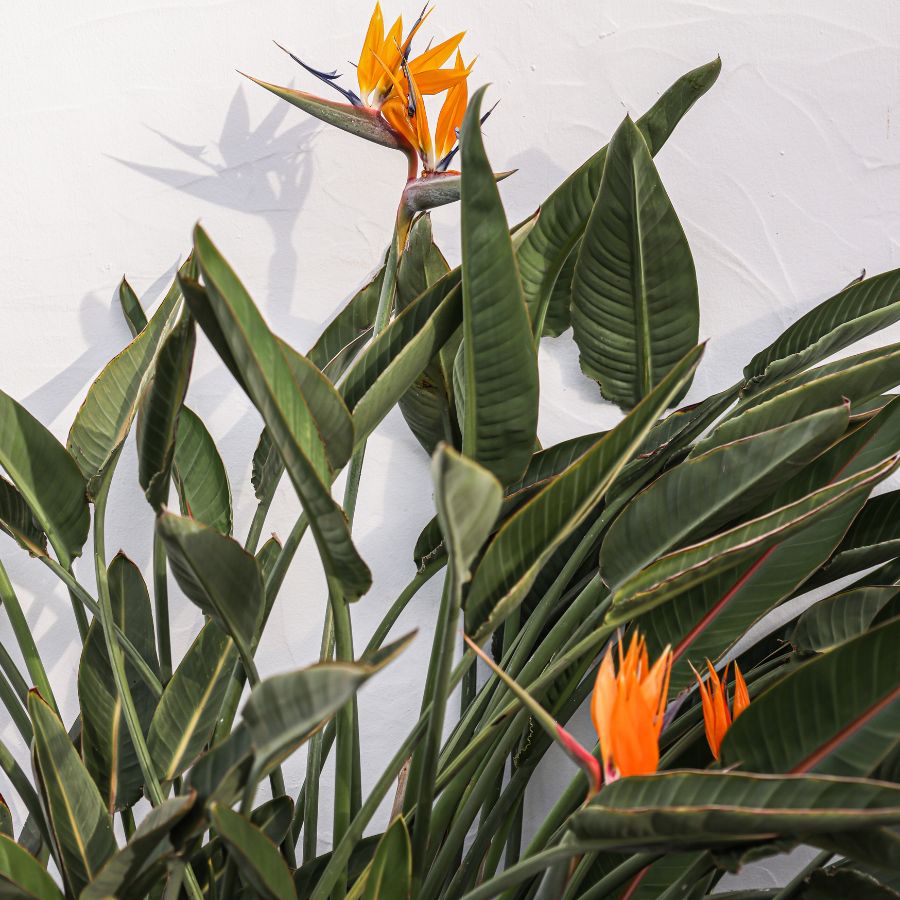
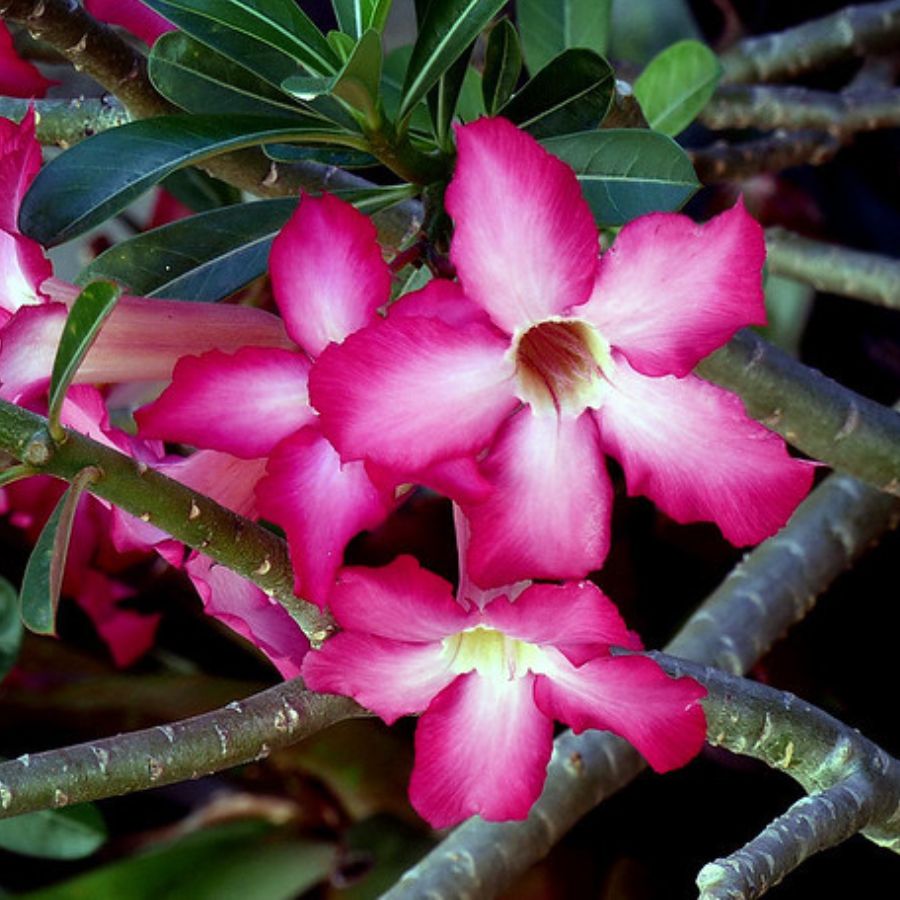
Desert Rose
The desert rose stems resemble the thick trunk of the bonsai giving it a unique and exotic look. It’s a slow growing, low water requiring plant that flowers in pink, purple, red, and white.
Emu Bush
The emu bush is a medium sized evergreen plant native to Australia. It has low water requirements, doesn’t mind heat, and likes alkaline soil. The plant will bloom in January through March and grow in a dense, round shrub.
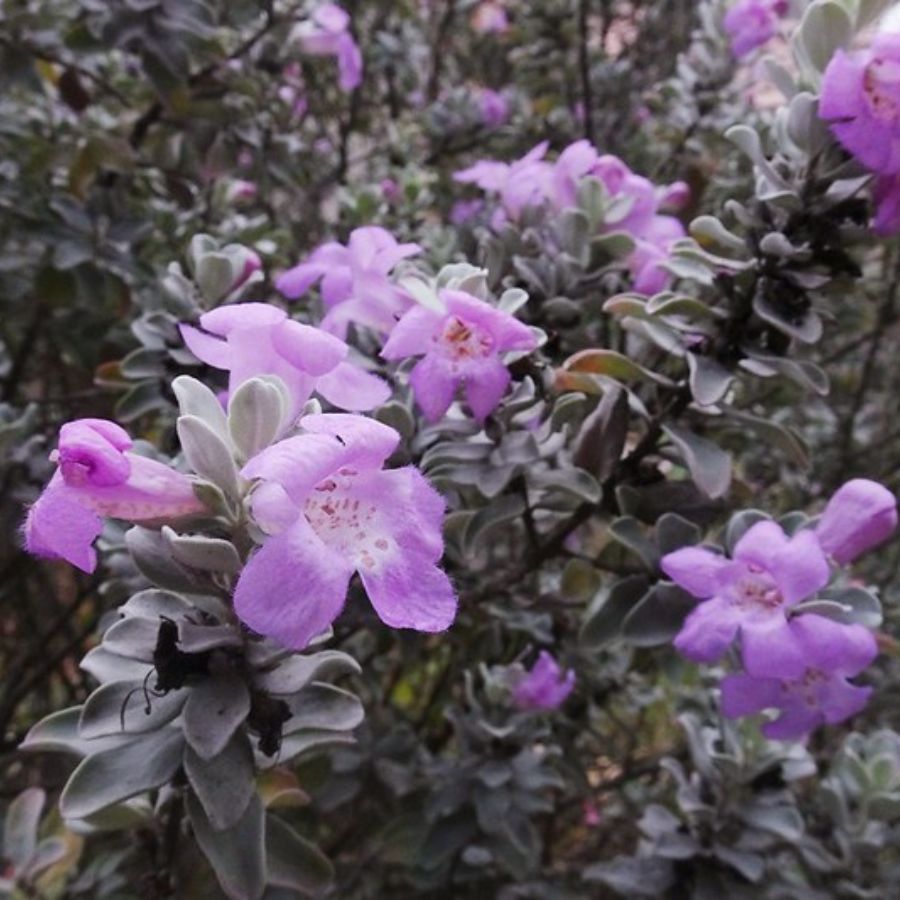
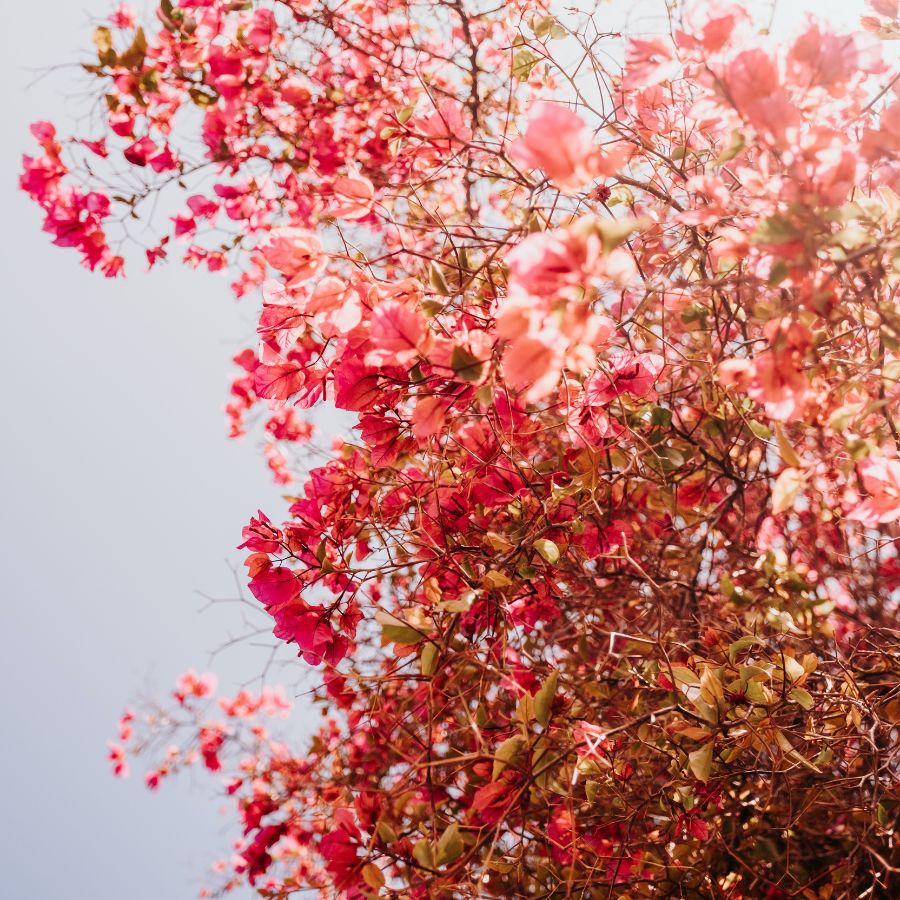
Bougainvillea
The bougainvillea is also a very common plant, that is due to its vibrant flower color, and its ability to thrive most conditions. Bougainvillea is also a climbing plant that grows fast and can get up to 40 feet tall, with support. Take care, this beautiful plant does pack a sting in the thorns on the branches.
‘Hot Lips’ Salvia microphylla
The nickname for this plant comes from the bi color of the flowers. The base is white while the tips are a gorgeous red, resembling to red lips. This plant is very resilient, and a great pollinator.
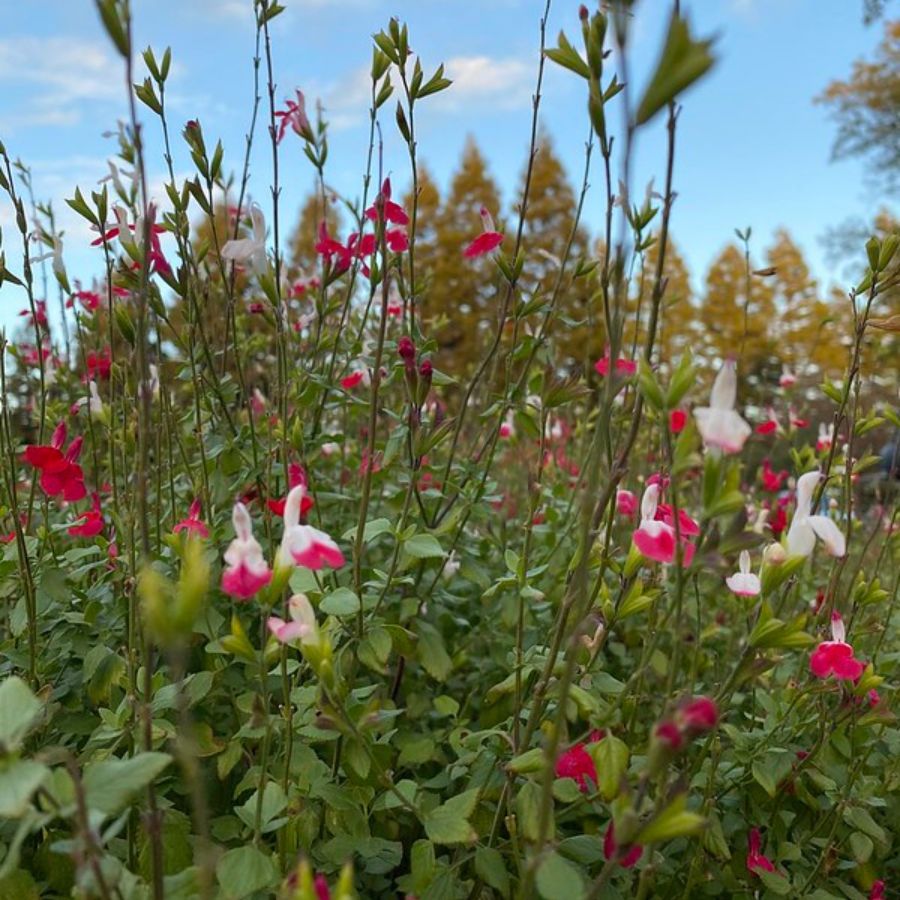
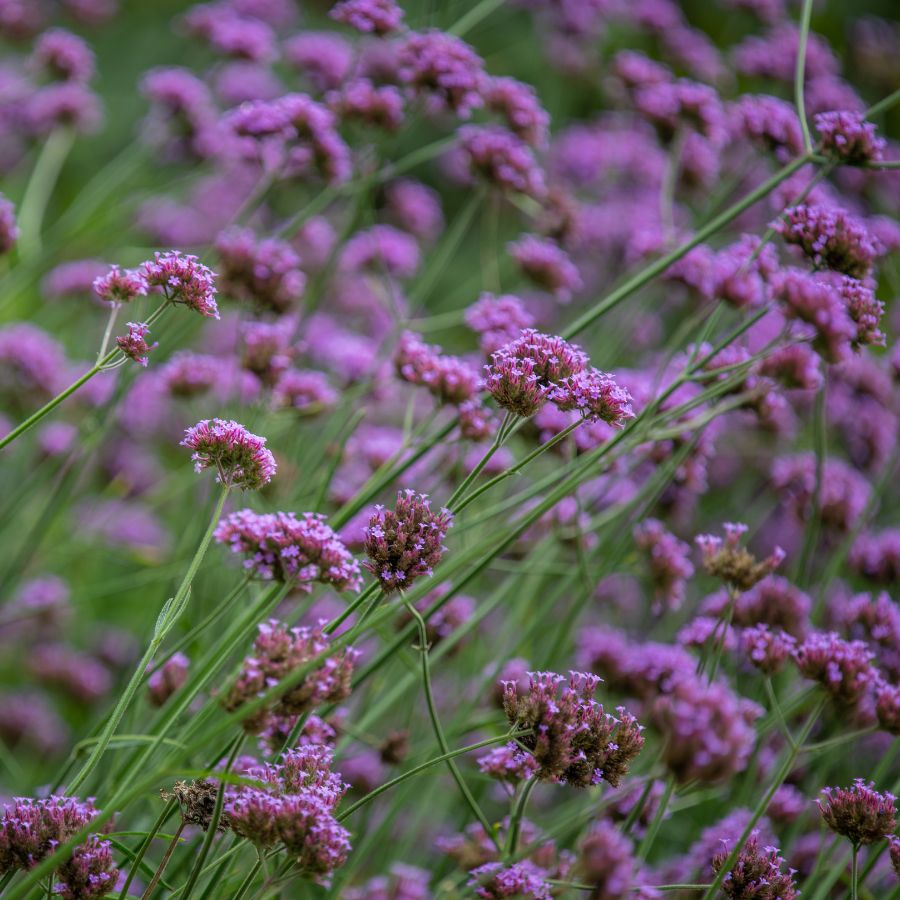
Verbena
Verbena flowers in blue, pink, purple, red, and white. The blooming season is long, and it is very drought resistant and prefers a lot of sun.
Wallflower
The wallflower get its name because it loves to spring up through small cracks and has a 4 petal flower. Flowers range from yellow, orange, red, blue, and purple. and will grow in shrubs, but you can find varieties that will grow as ground cover.
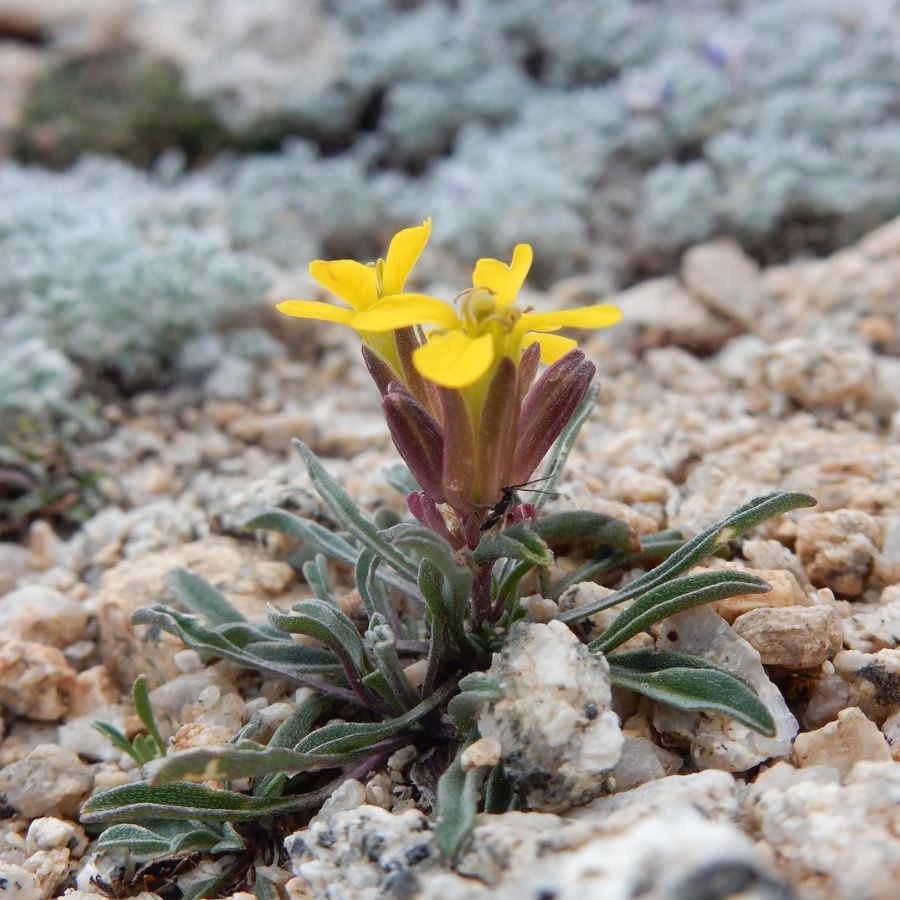
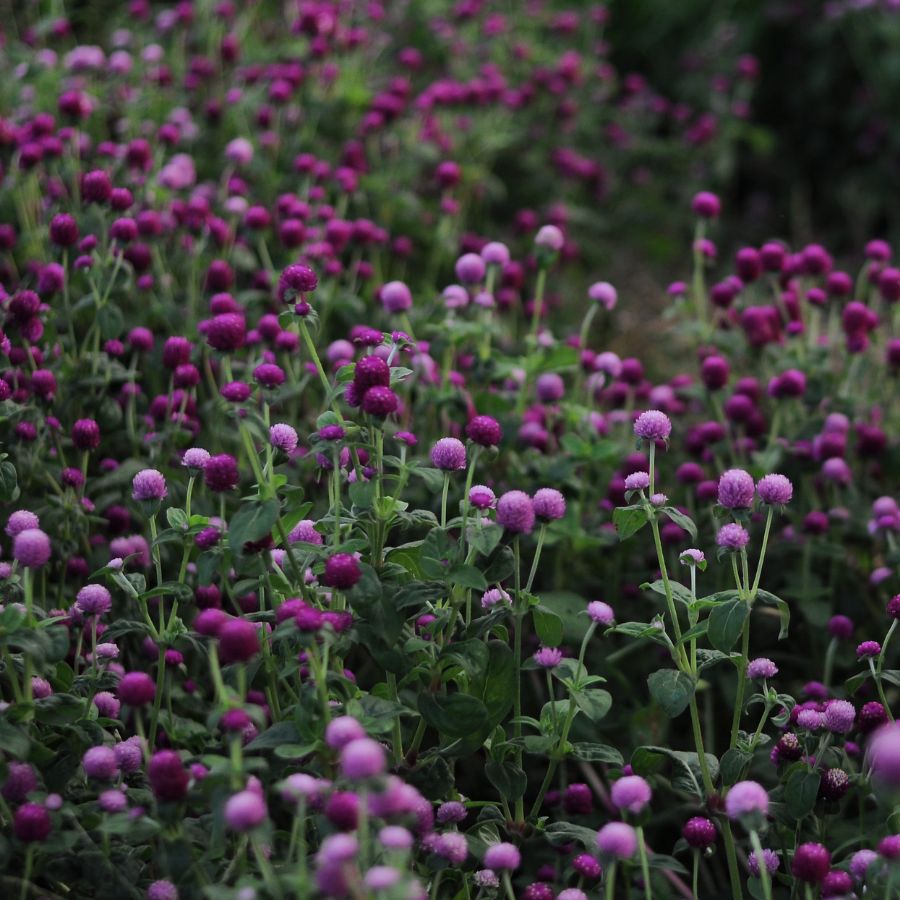
‘Balboa’ Globe Amaranth (Gomphrena leontopiodes ‘Balboa’)
This is a low maintenance flower that blooms from June until frost. You’ll see these in purples, pinks, reds, and whites. The globes are great for pollinators. The globe isn’t actually the flower, but special leaves that cover the small flower.
Lavender Cotton
The lavender cotton enjoys full sun, in. the shade the plant becomes floppy and loses its dense characteristics. It makes a great topiary or hedge, as it doesn’t mind being cut back as needed and recovering.
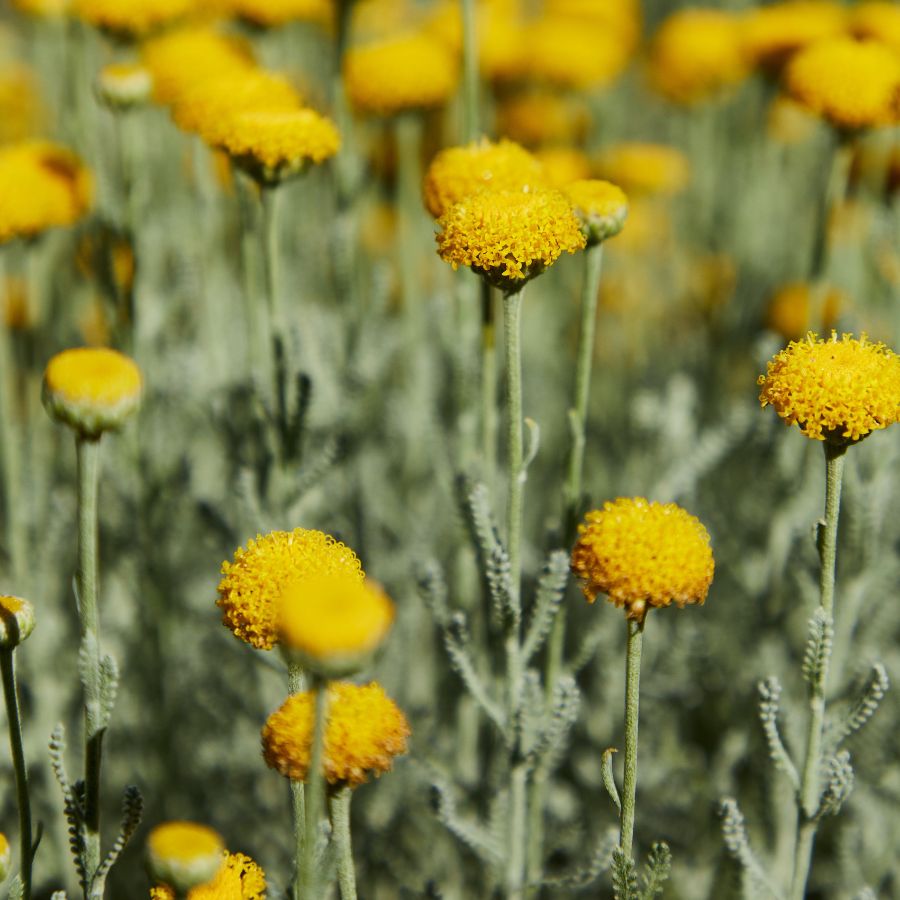

Miss Molly Butterfly Bush
The ‘Miss Molly’ butterfly bush is true to its name and attracts butterflies, bees, and hummingbirds. The flowers also grow at an amazing rate, allowing for cuttings for vases and bouquets. It will flower in hues of red in warmer climates, and in hues of purple in colder climates.
Jerusalem Sage
The Jerusalem sage will grow to between 3 and 4 feet tall, and will cover about the same space in width. The plant has a fuzzy textured leaf and blooms between spring and summer.
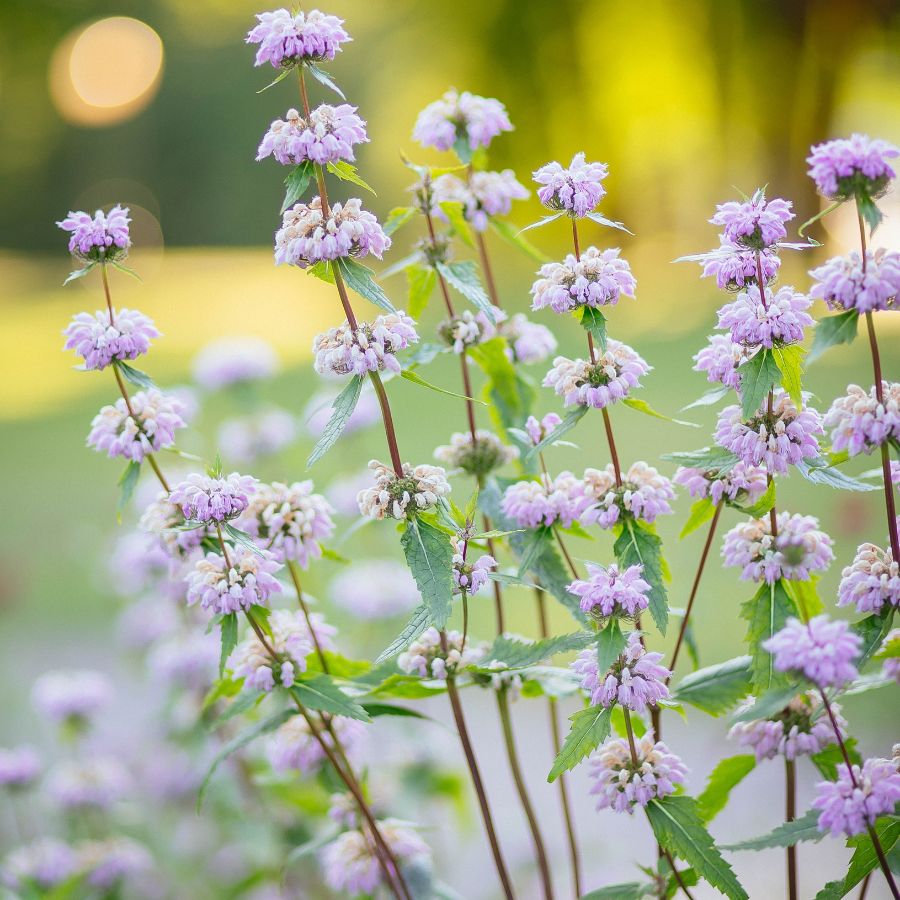
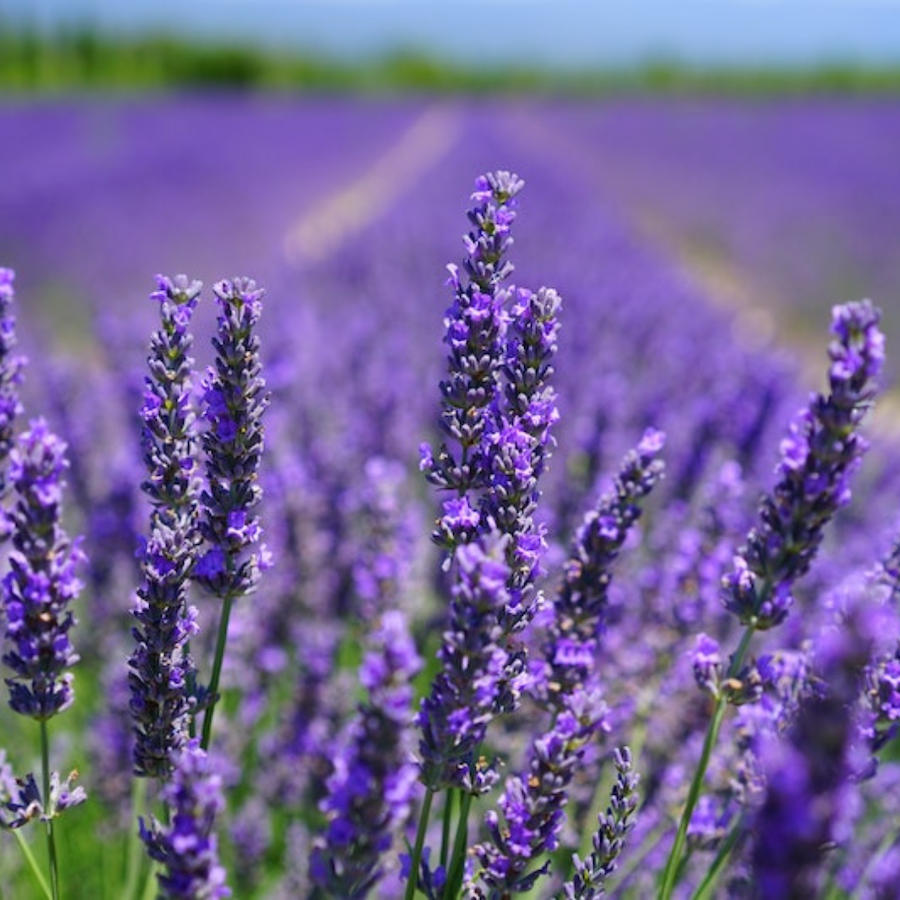
Lavender
There are so many positives that come along with lavender. It’s aromatic, a pollinator pleaser, has properties that help decrease stress, and does well in warm, dry areas. Lavender grows well in pots or garden beds, it just needs to have a well drained system to thrive.
Globe Thistle
The globe thistle flowers in blues and whites. It is fast growing, drought tolerant and attracts butterflies. The unique flower blooms in summer, looks great in bouquets, and dries very nicely so you can enjoy them all year long.
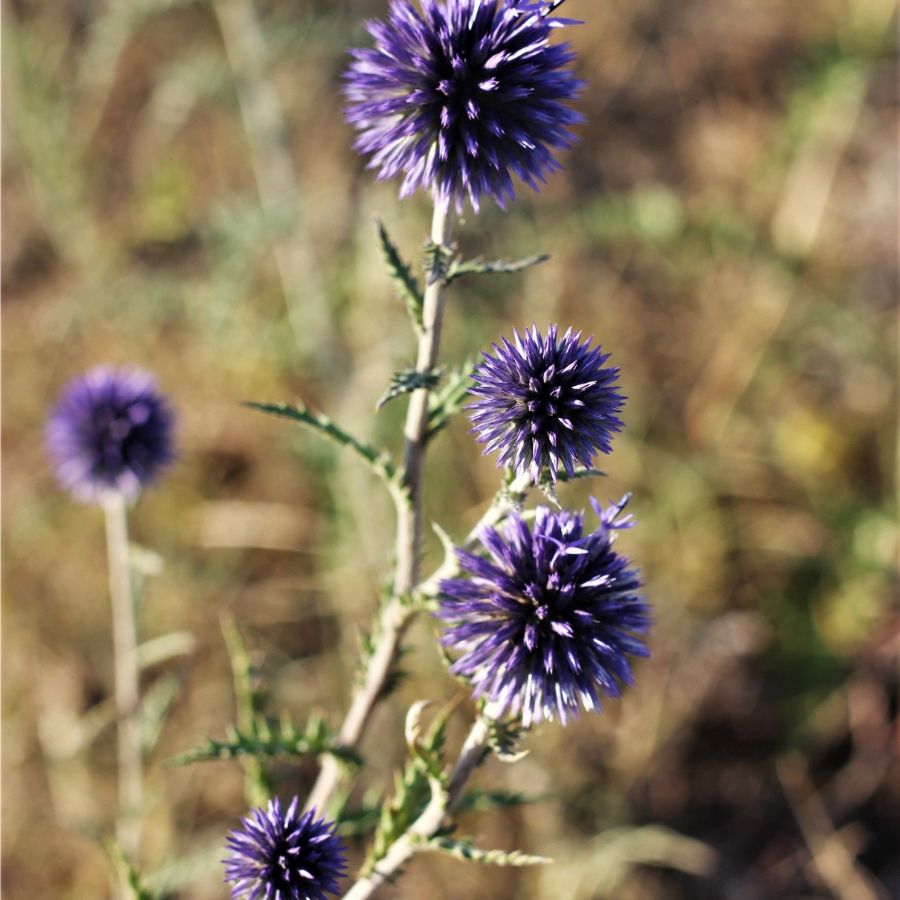
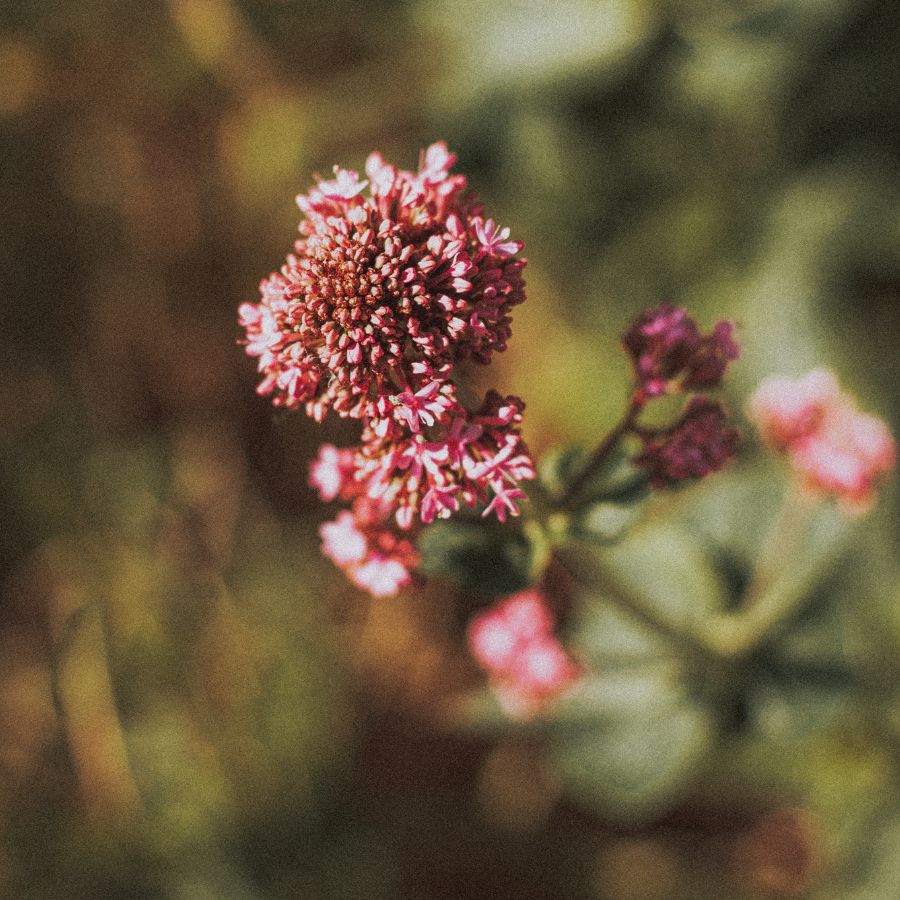
Red Valerian
The red valerian is a bushy plant that blooms fantastically in pinks and whites over the summer. The bush can grow up to 3 feet, and is amazing at taking care of itself. It thrives in poor soil.
Crown of Thorns
The crown of thorns has the ability to bloom year round. This plant thrives not only outdoors, but indoors as well, if you’re looking to add a little color. But, true to its name and has thorns throughout.
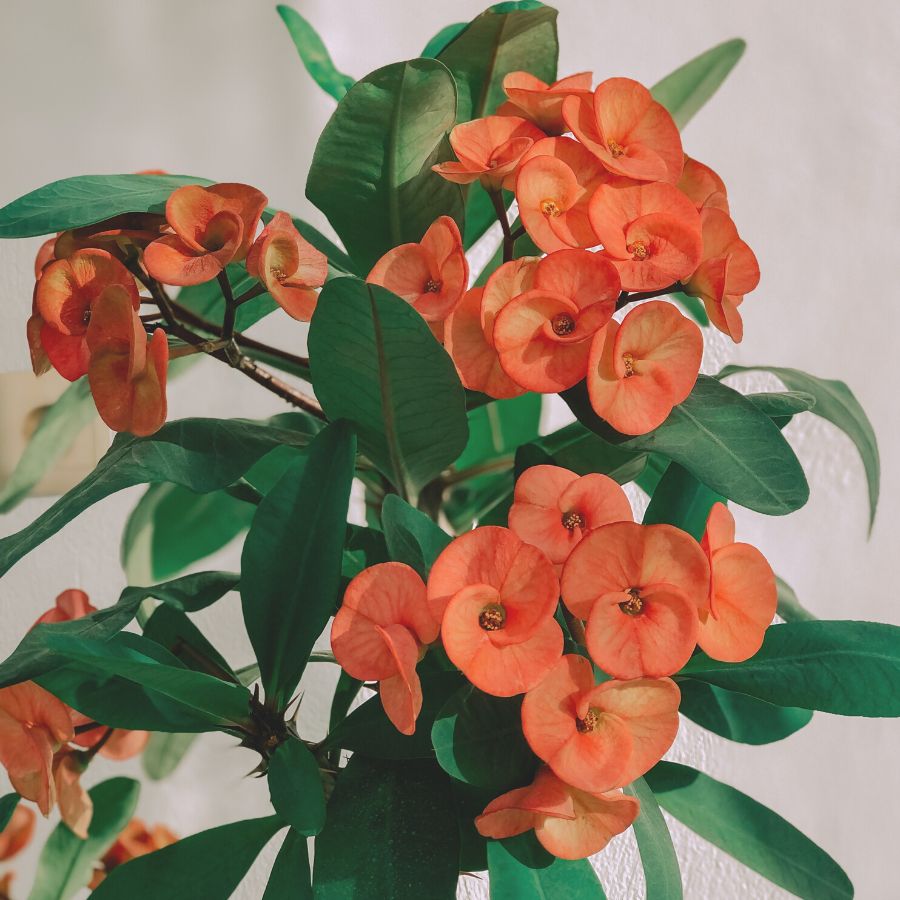
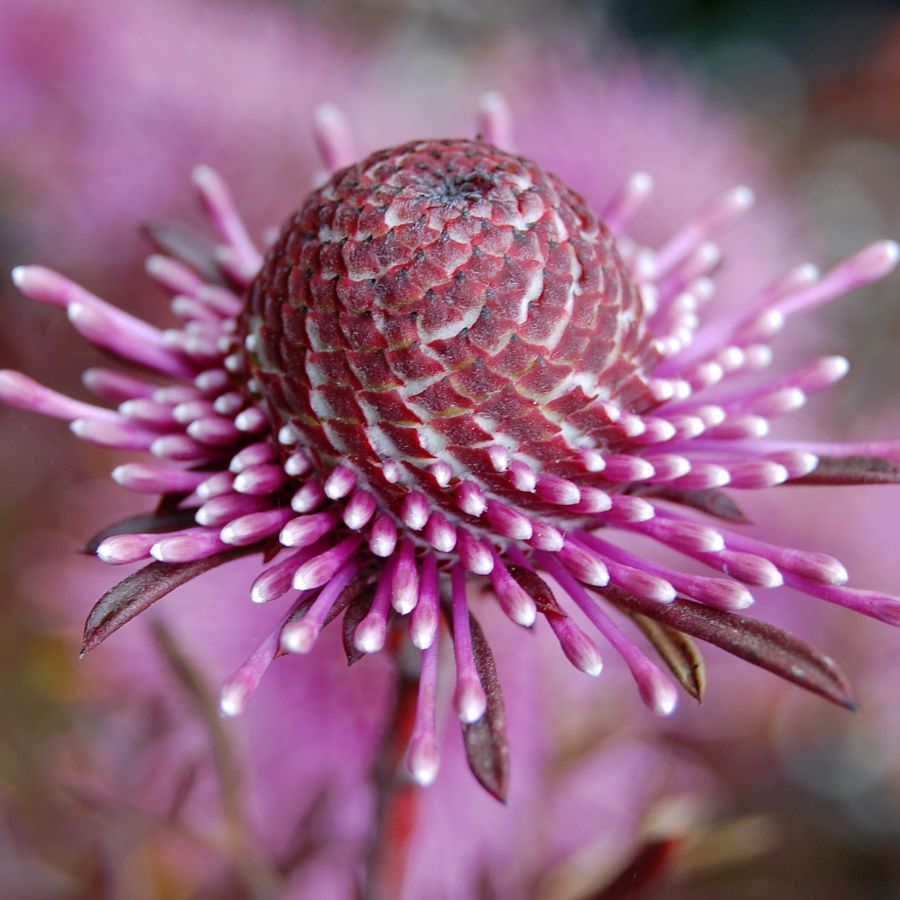
Rose Coneflower
The rose cone flower is native to Australia, and thrives in drought like conditions. The flower itself is very unique and reminds me of a sea anemone. The rose coneflower comes in reds and mauve.
Ceanothus griseus horizontalis ‘Diamond Heights’
the ‘Diamond Heights’ plant is a low growing, dense with leaves of varying greens and grows to up to 12 inches and sprawl to about 6 feet. It blooms in variations of blue in clusters in spring.
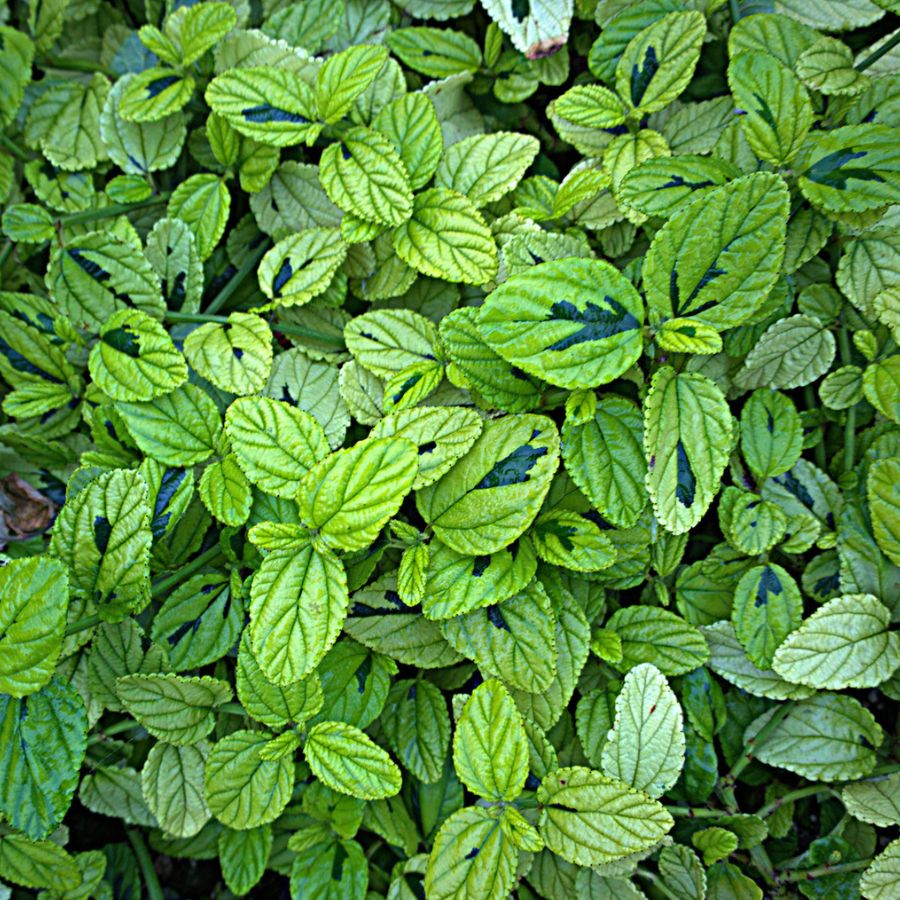
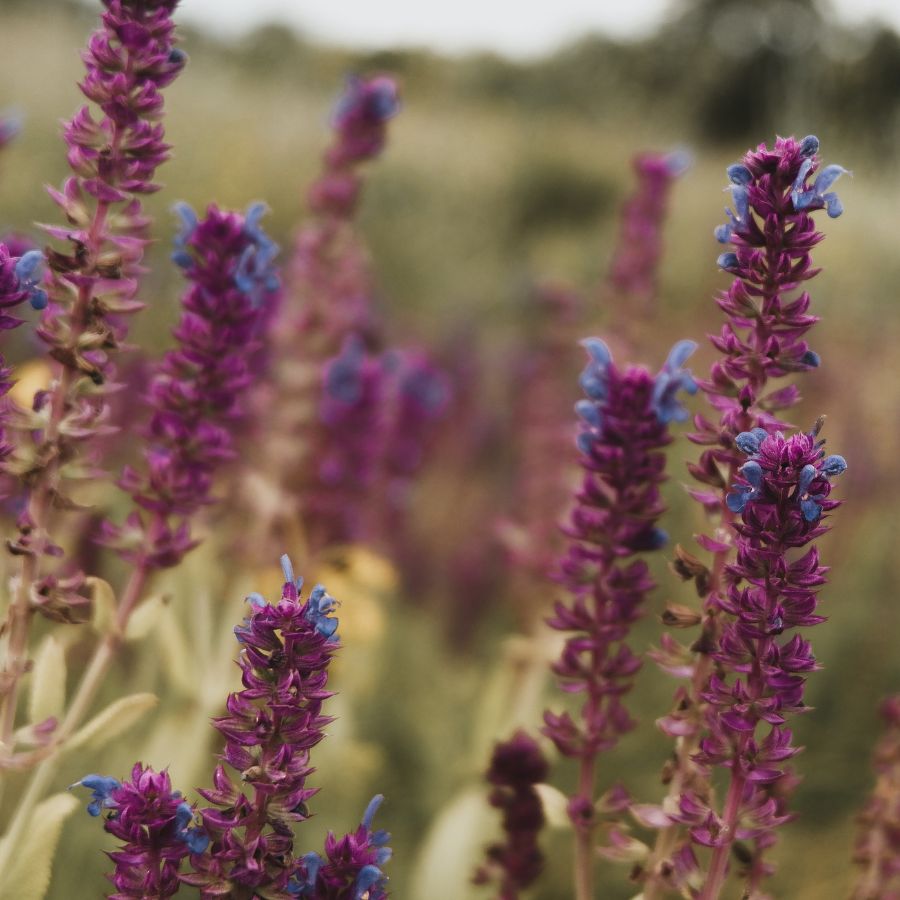
Russian Sage
The Russian sage resembles the lavender plant and shares drought tolerant attributes. One the plant flowers it will almost entirely cover all the green leaves. This is another plant that, if left in partial sun will sprawl outwards instead of staying close and growing upwards.
Yarrow
Yarrow is known for it’s anti-inflammatory properties, as well as wound healing, digestive disorders, and other health issues. As a plant, it flowers in bundles in a variety of colors pink, red, white, and yellow. The flowers also look amazing in bouquets, or dried.

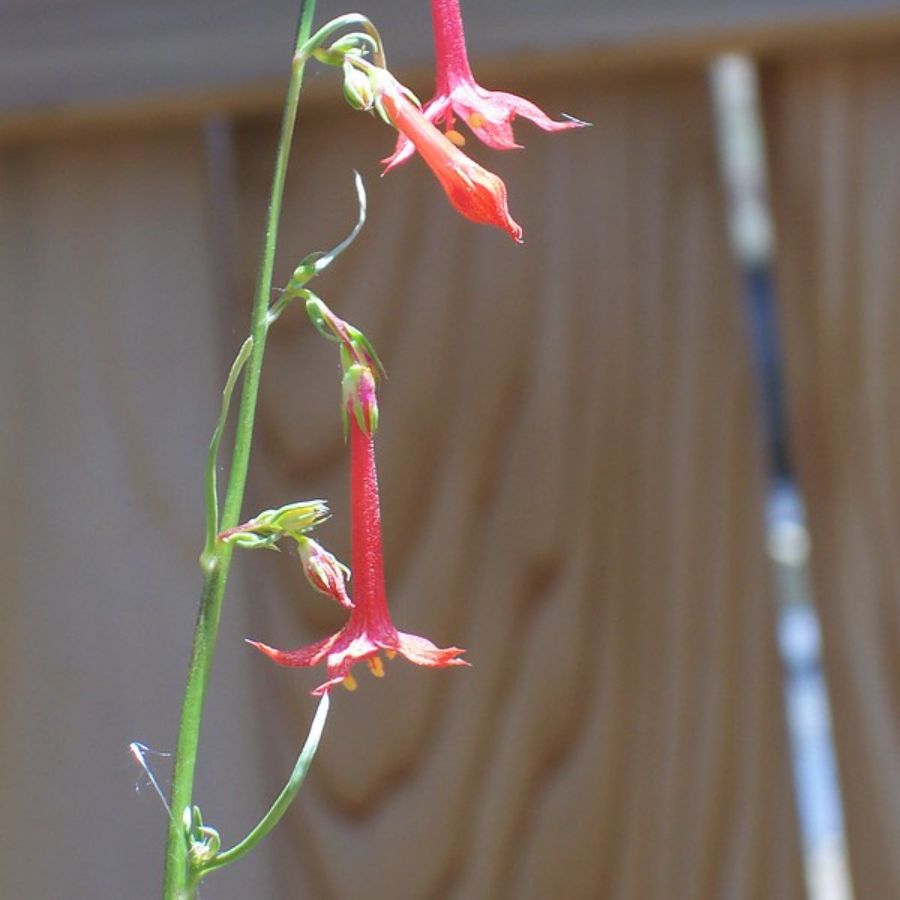
Pineleaf Penstemon
This bright flower blooms in late spring, likes a little more space than other plants in the garden, doesn’t like to be fertilized, and likes well drained soil.
Giant Hyssops
Fun fact, the leaves give off a scent of anise when bruised. The flower itself spikes at the top of the stems in blueish hues. It is also part of the mint family.
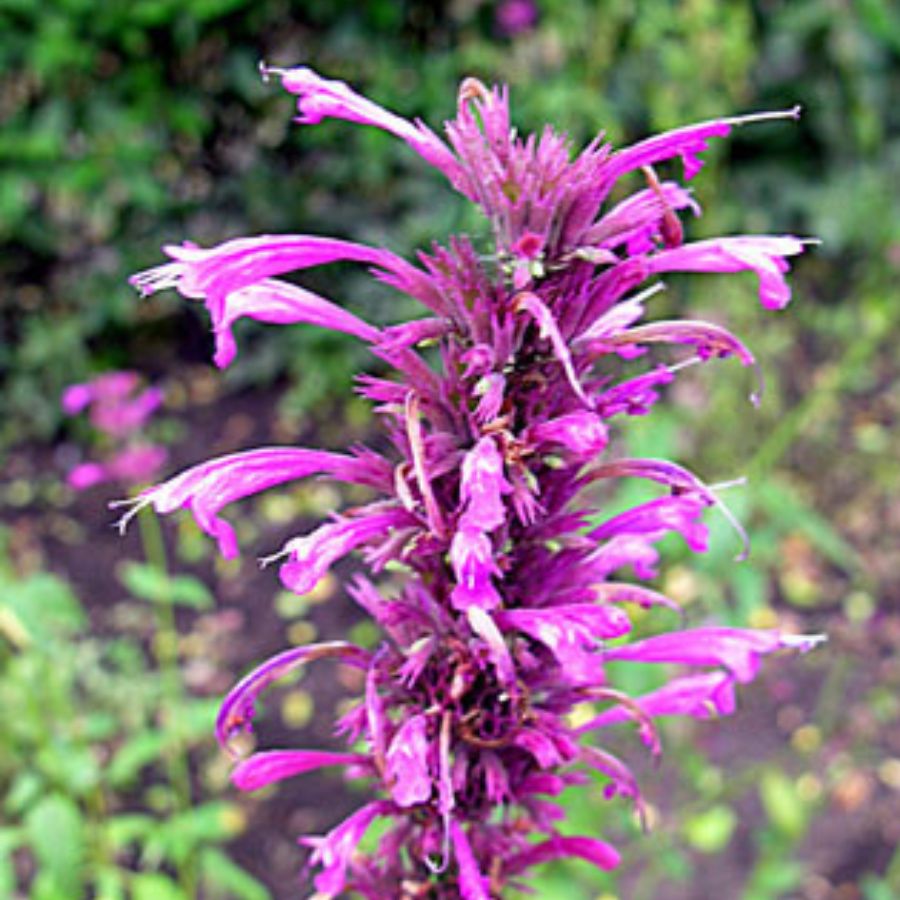

Beardtongue
The beardtongue flowers in pink, red, white, purple, and sometimes yellow and will bloom in early summer. If you plant from seeds it will take a long while to germinate.
California Poppy
The California poppy flowers in summer, is known for growing on its own in cracks and vacant lots. While it looks beautiful, once picked the flower petals will quickly fall off the flower.
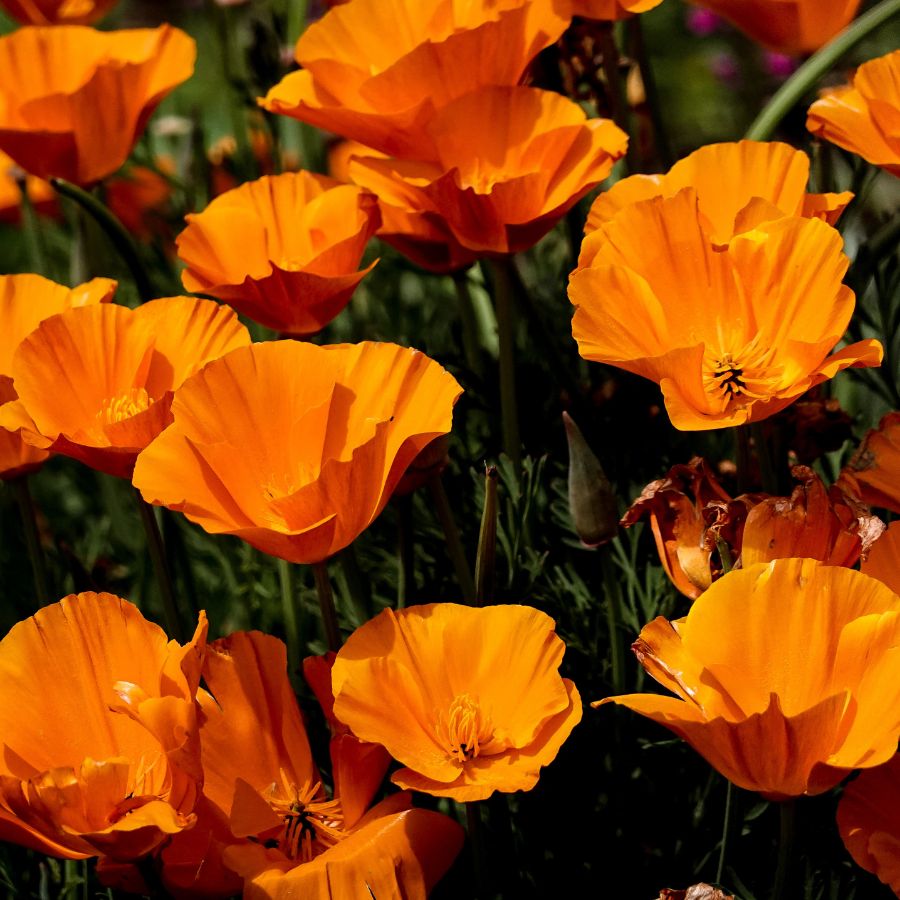
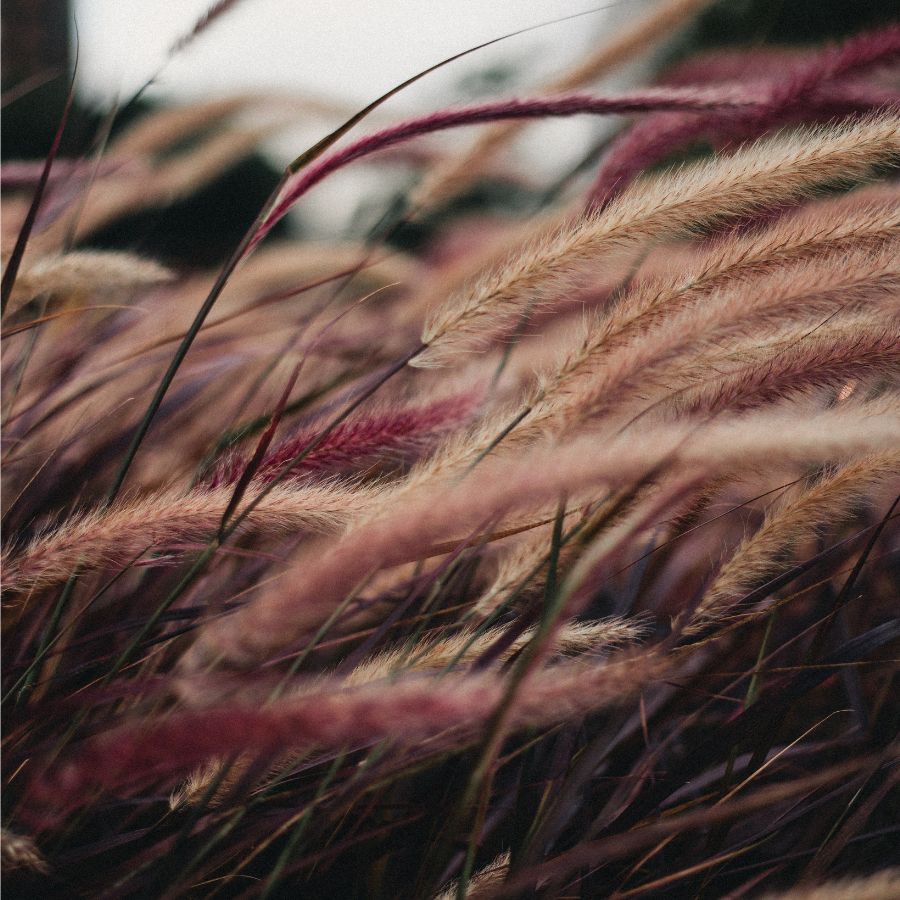
Purple Fountain Grass
This is a fast growing plant when it has enough sun and some water. The grass grows both up and out. The fuzzy flowers are purple and cream.
Kangaroo Paw
This plant gets its name from the shape of the flowers, which resemble the pas of a kangaroo. It is also another plant native to Australia. The plant will bloom in red, yellow, orange, and purple.
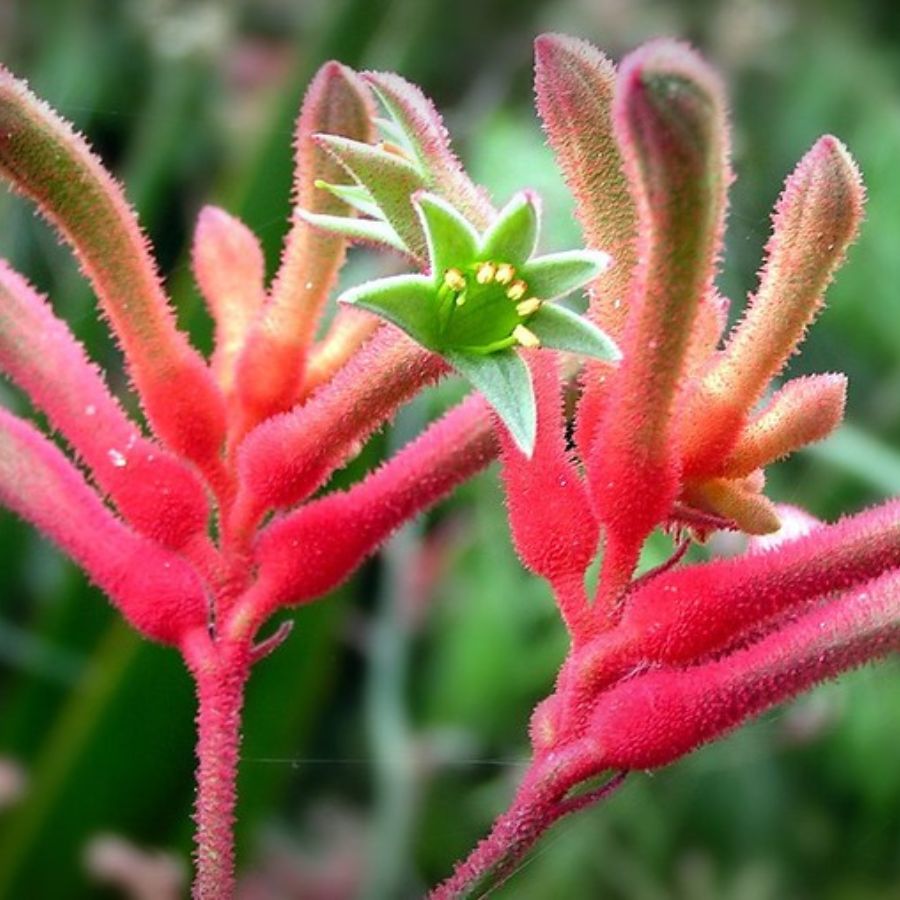

New Zealand Tea Tree
This tree has small, needle-like leaves that are prickly. These leaves give off an aroma when they are crushed. The flowers on the tree will bloom in white, pink, or red.
Wild Lilac
The wild lilac can grow as ground cover, small tree, or a large bush. The plant will bloom in creamy white, or bright blues and attract pollinators.
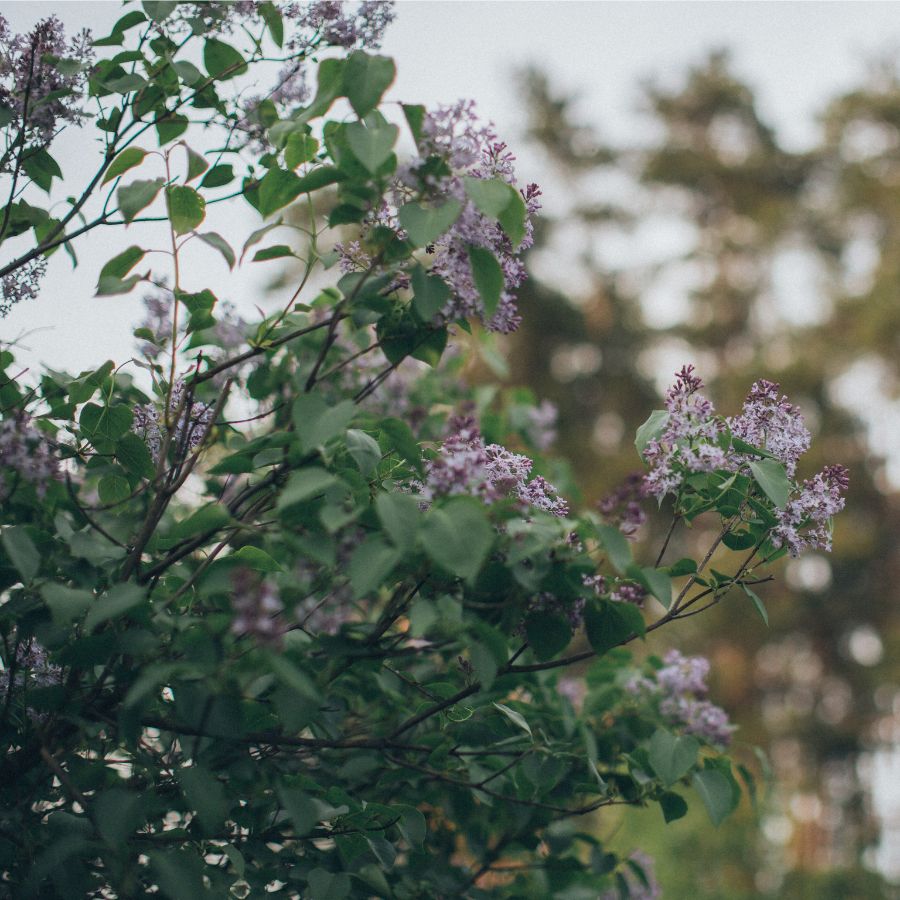

Trumpet Vine
The trumpet vine blooms in red, orange, or yellow during the summer. As it is a vine it will crawl, you do have the ability to control the direction of the crawl.
Catmint
The catmint blooms in lavender blue flowers. The Romans used the plant for tea and insect repellent. Catmint can often be confused with catnip. However, the attraction of cats is limited to catnip.


Artichoke
The artichoke is part of the thistle family, allowing you to plant it either with other plants, or within a garden. The plant itself will grow between 3 to 5 feet.

